Schematic combines feature management and subscription management into one platform, allowing product and engineering teams to quickly decouple pricing from application code.
This gives product and GTM teams the power to launch any billing model, iterate on packaging, enforce limits, run trials, configure custom deals, deliver in-app billing, and turn usage and billing data into actions that drive expansion — all without code changes.
Our mission is to help engineering teams spend far less time on billing and give product and business teams the tools to accelerate revenue by leveraging pricing & packaging with far greater agility, control and flexibility than they've known in the past.
Our platform integrates bi-directionally with Stripe to facilitate billing while adding powerful capabilities on top of it such as embeddable UI components, internal admin dashboards, feature flags to power entitlements, and usage-based metering.
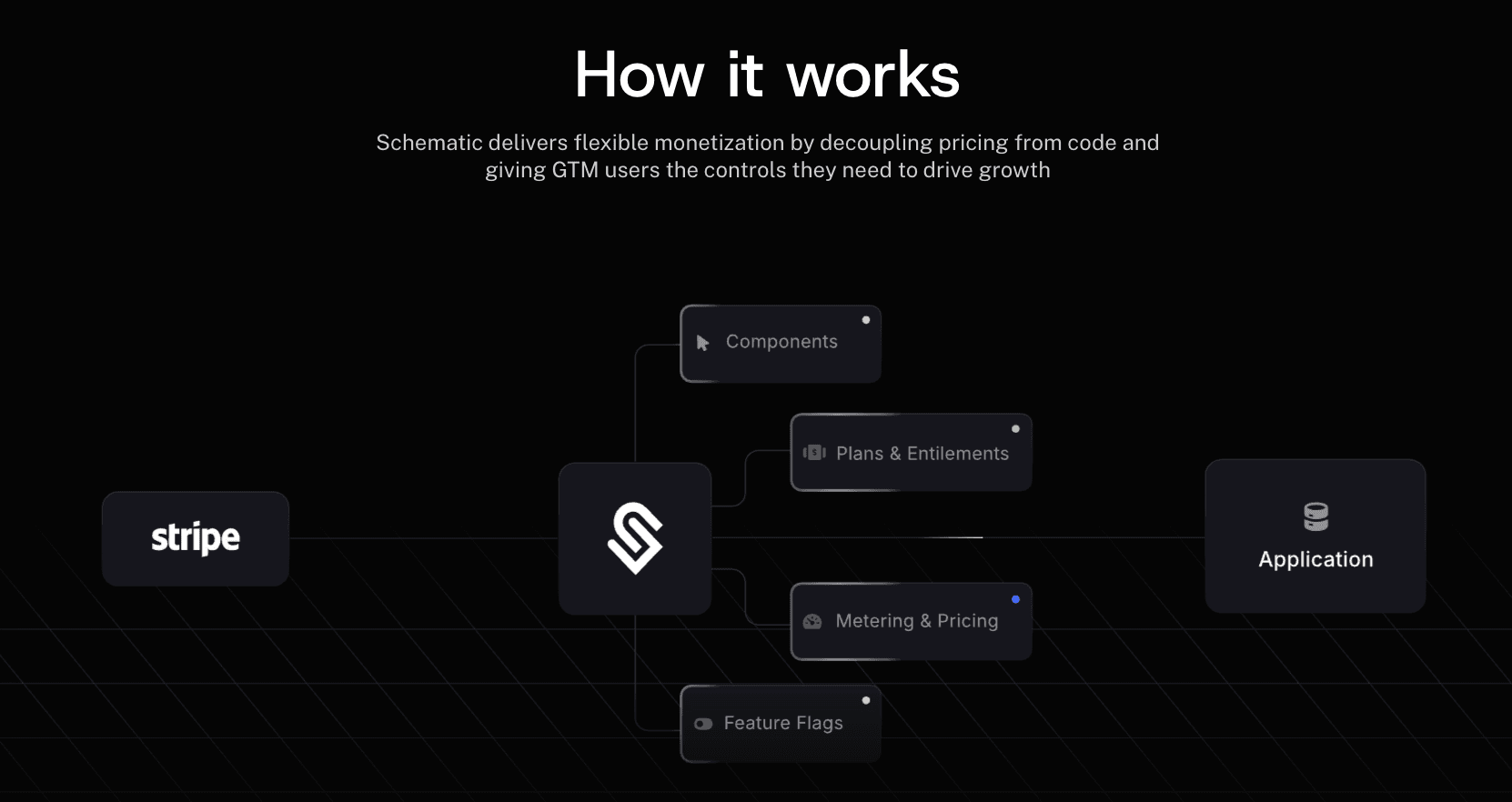
This means you can manage your entire pricing and packaging surface area — from how you charge your customers to how they experience your product — without the need for homegrown systems that tightly couple pricing and packaging logic into application code.
With Schematic, you can:
Control access to your product with feature flags: Manage which customers have access to which features without needing to touch your application code.
Meter usage: Easily track customer usage and bill accordingly, supporting hybrid & usage-based pricing models (e.g. overages, pay-as-you, credit burn down).
Enforce limits: Use soft & hard limits, entitlement triggers, and alerts & webhooks to drive expansion & protect against limit abuse.
Manage your product catalog across hybrid GTM & multiple products: Update plans, bundle & unbundle features, offer add-ons & enterprise plans, launch trials, & support legacy plan versioning.
Get a 360-degree view of your customers & easily control configuration: Combine account, usage, and billing data into a single, easy-to-access profile, giving your team the visibility and the tooling to manage customer plans, limits, exceptions, and feature access -- without code changes.
Embed native billing UI: Add drop-in purchasing components beyond basic checkout, such as upgrade/downgrade, customer portals, pricing tables, and usage meters. Power internal workflows for sales and account management, including web hooks, alerts, and paywalls.
There are several major concepts built into Schematic that you can read about in more depth in other sections of our documentation.

The Catalog describes a company’s Plans and Add Ons and associated Entitlements. The definition of an Entitlement within a Plan or Add On includes default values for allocations or limits, and pricing.
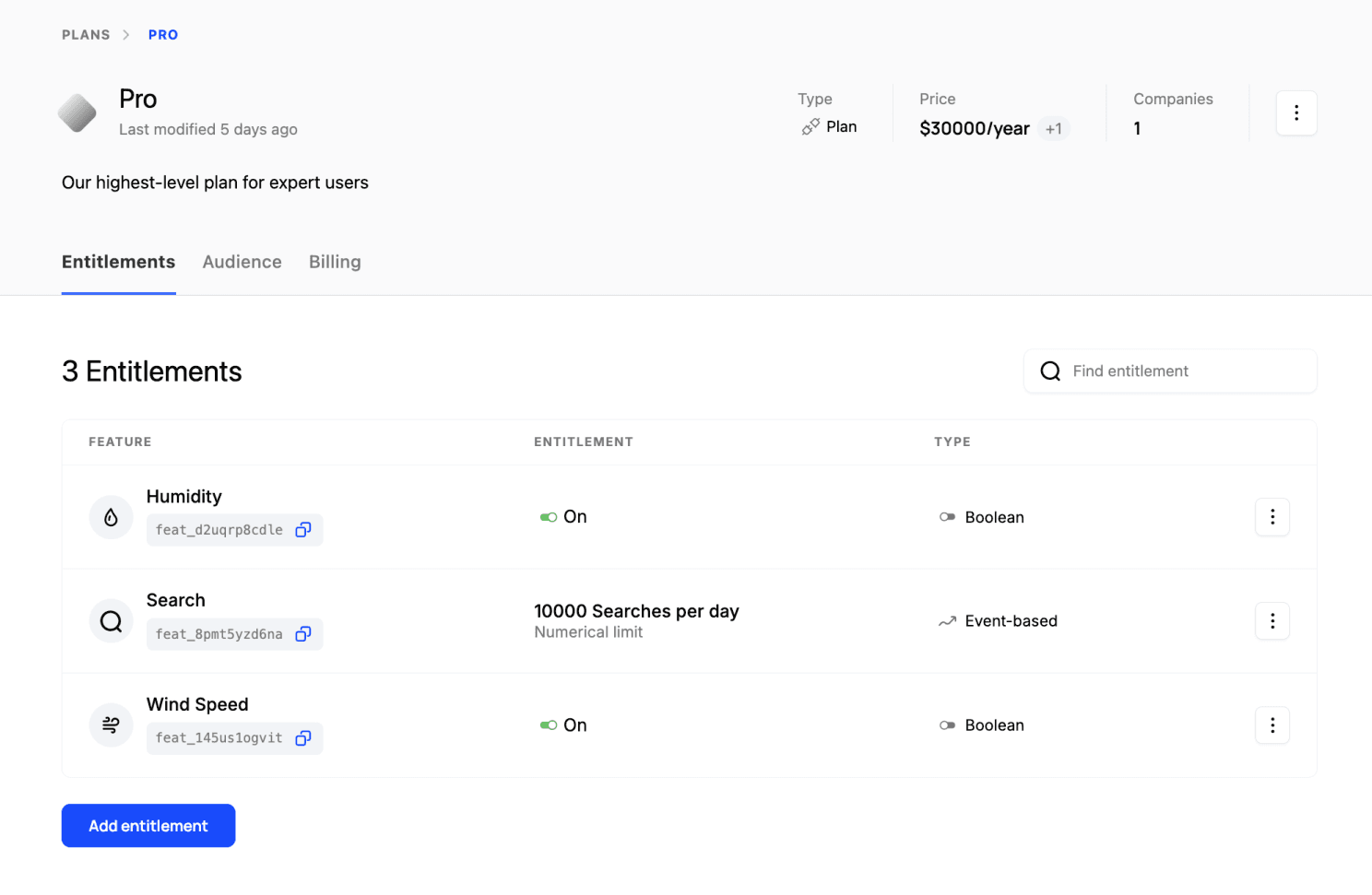
A plan in Schematic with 3 entitled features. Notice 2 features are boolean and 1 feature is event-based
If one of your customers (a Company) is subscribed to a Plan, access can be gated in your application based on associated Entitlements with Flags.
The Company Profile is a centralized record of company information, aggregating all relevant company keys, traits, subscription details, and usage data into a single profile that can be leveraged across tools.
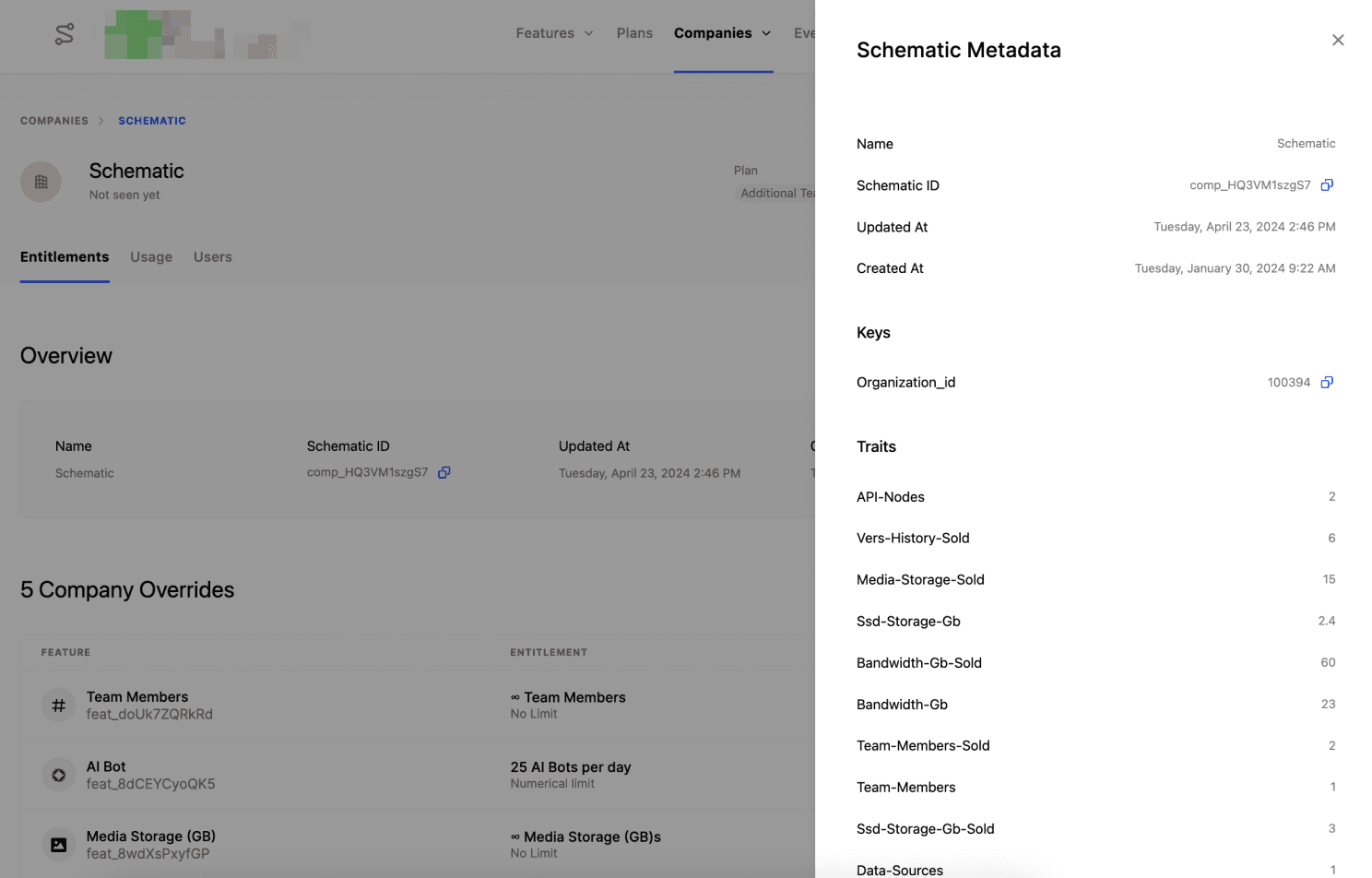
Company profiles in Schematic centralize customer state and often replace homegrown admin panels
The profile is key-based and key uniqueness is enforced across profiles to prevent duplicates. Profiles can have multiple keys so any one key does not need to be persisted across systems.
Profiles and profile traits can be referenced in flag targeting and plan audiences.
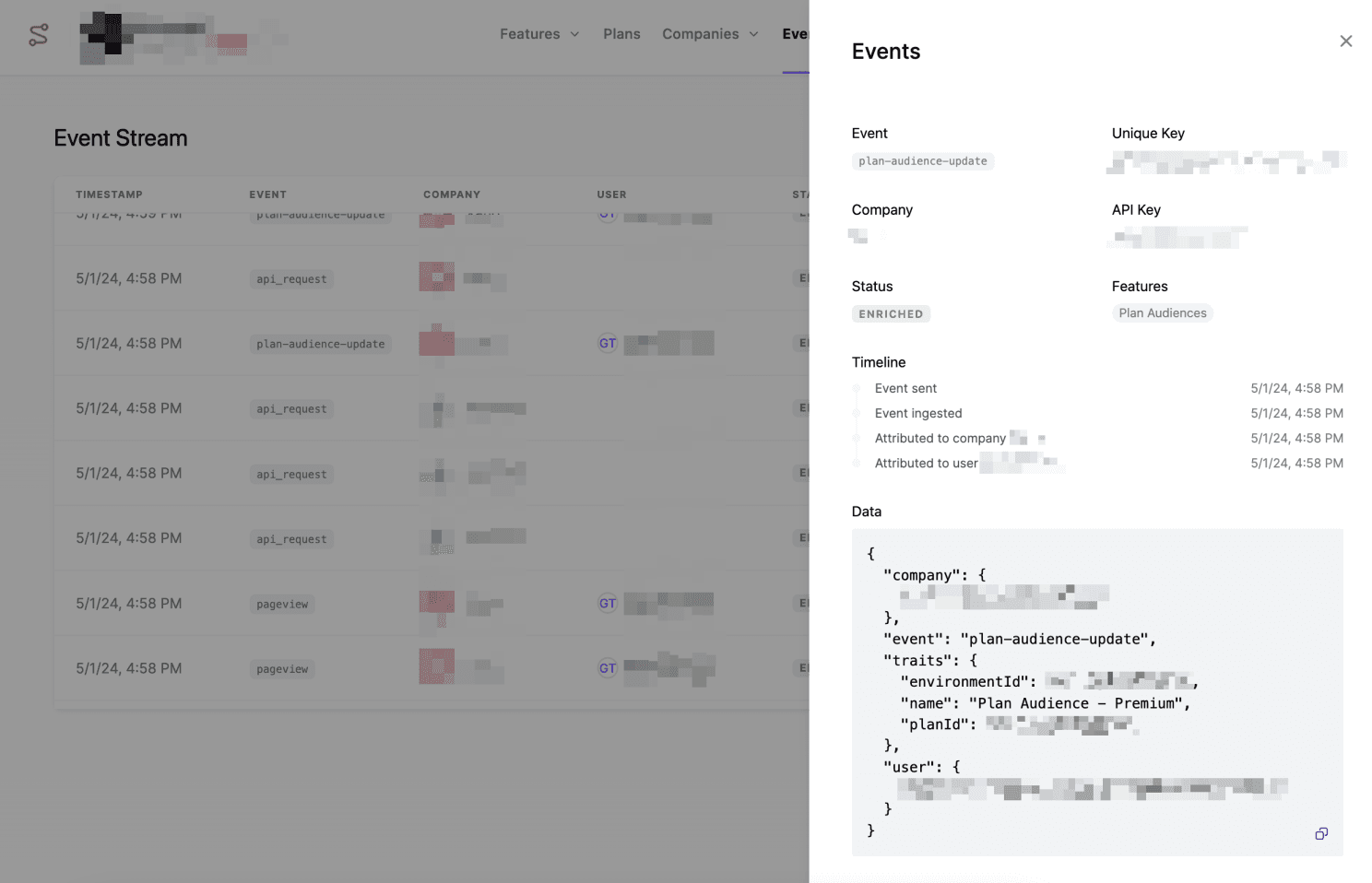
Metering is crucial for supporting usage-based models. Metered properties can be monetized or un-monetized (tracked for telemetry or enforcing a packaged limit).
Metered events
A usage event can be attributed to companies, users, and features within Schematic, forming the basis for enforcement and insights into customer behavior.
Subscriptions from Stripe are automatically linked to Company Profiles in Schematic.
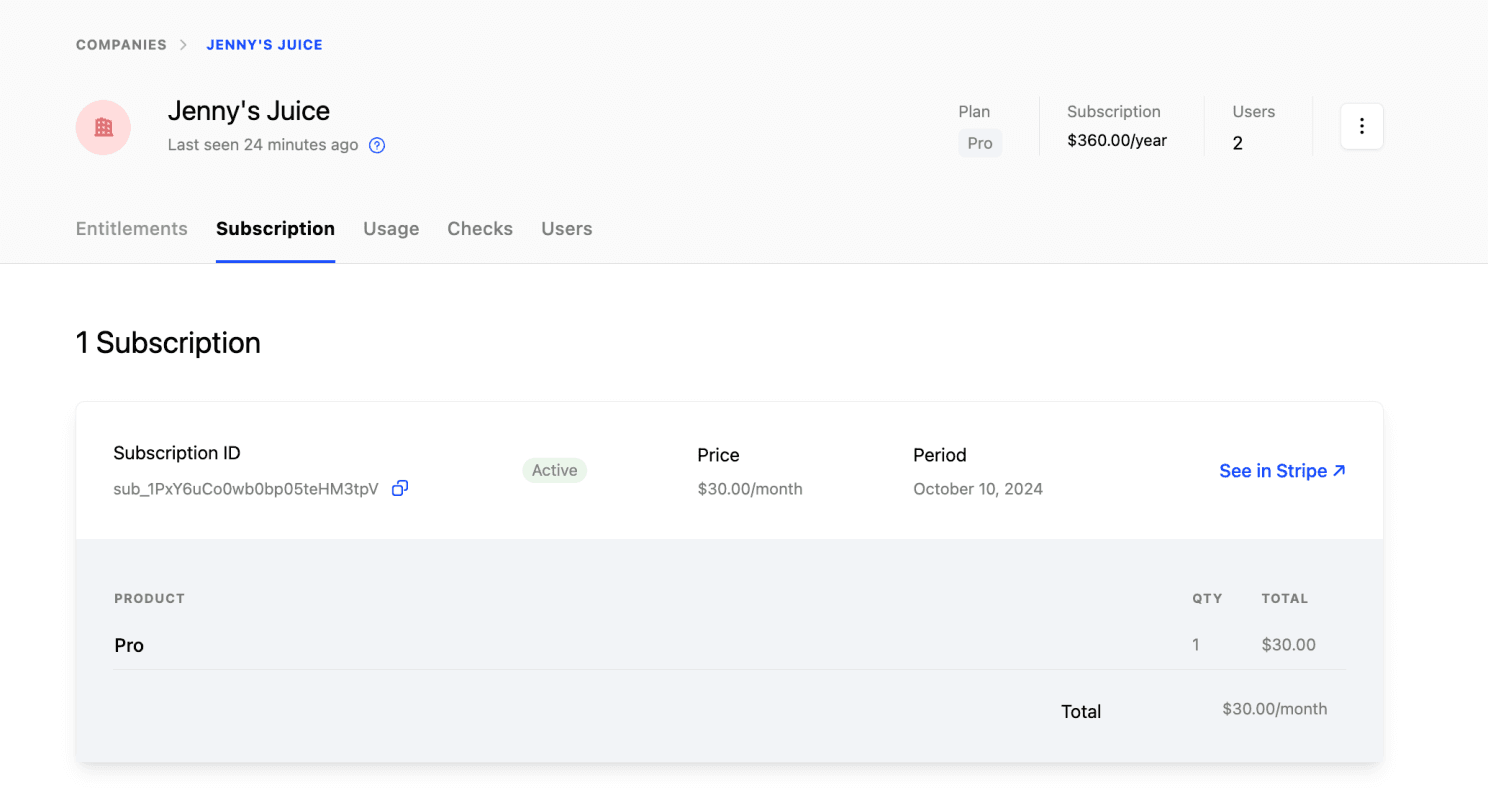
A company's Subscription in Schematic. A Stripe Product is 1:1 with a Schematic Plan
Companies can then be assigned membership in Schematic Plans based on those Subscriptions, or by creating explicit audiences based on Company attributes.
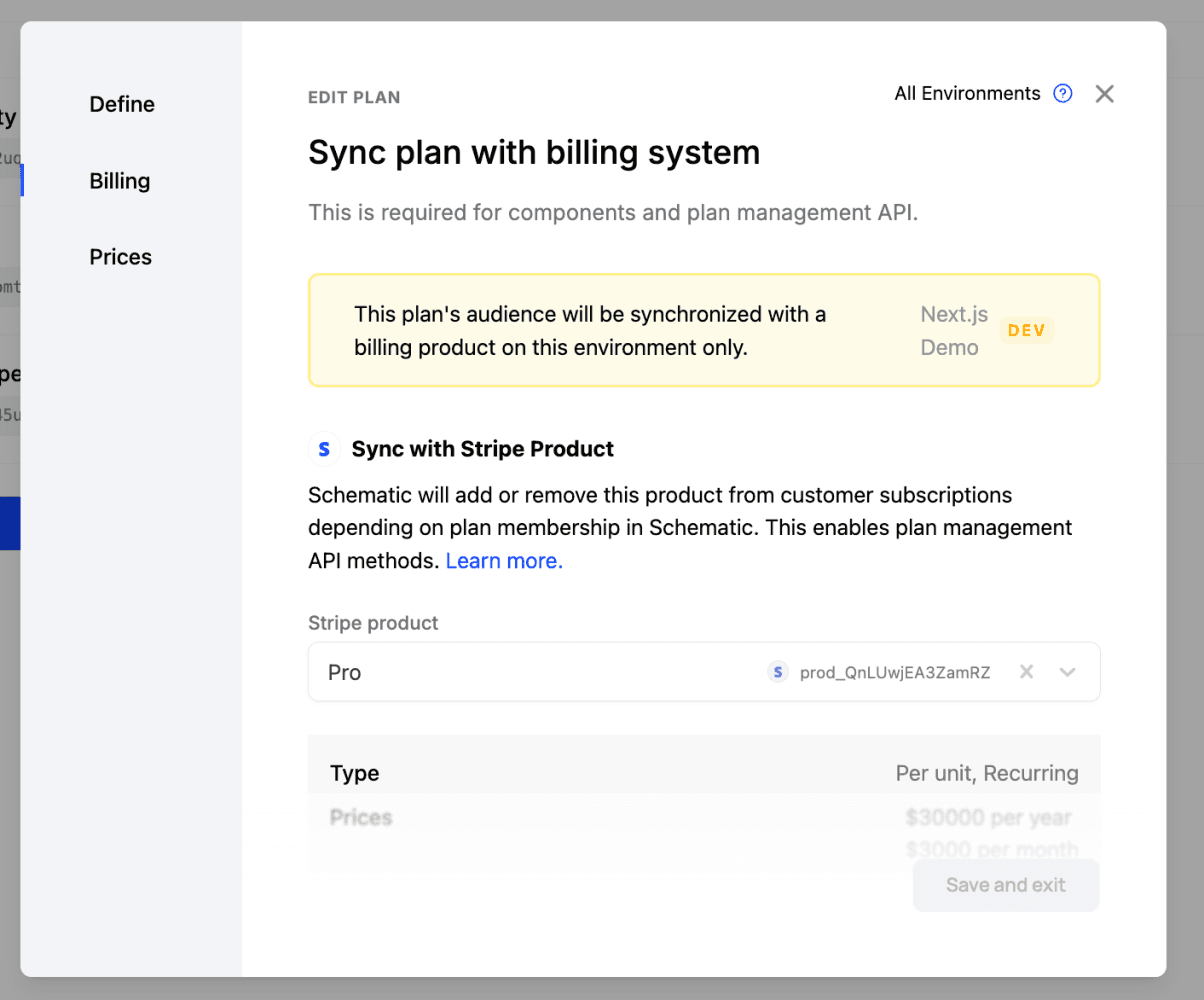
A company may have membership in more than one Plan or Add On in the Catalog at any given time, which would result in the most permissive entitlements among them.
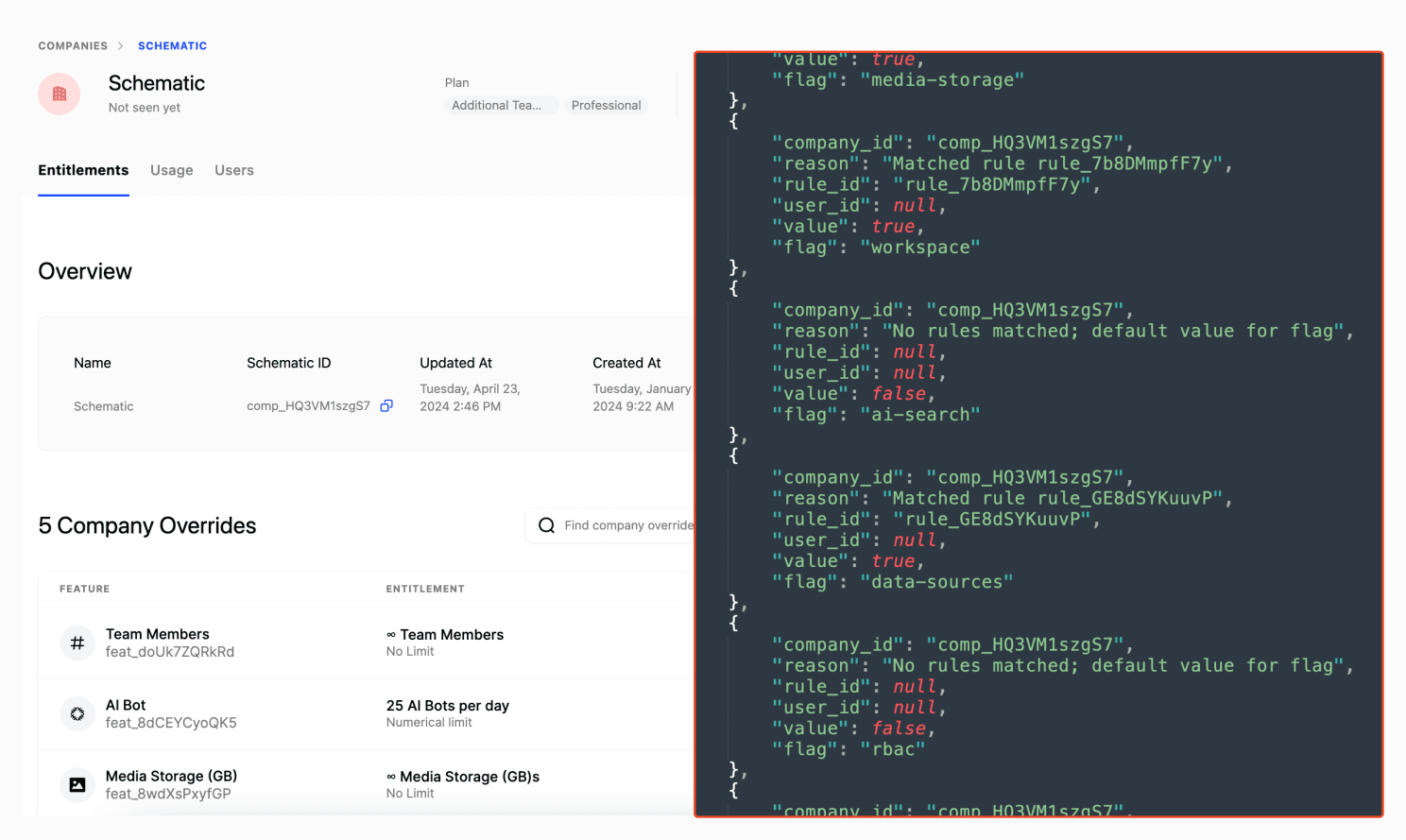
Schematic offers feature flags and entitlement flags. Entitlements must be first-class citizens in any billing stack if companies want to realize & leverage pricing & packaging agility.
Flags dictate who gets access to what features or services based on their context, and how much of a particular feature they get. This ensures companies can access only the features they should have access to, which is important for trials, tiered services, and premium offerings.
Company access is informed by the parameters of a company’s subscription and other policies set up in Schematic.
Schematic’s embeddable UI components are designed to deliver a consumer-grade purchasing experience to all of your end users. That includes the ability to manage subscriptions, view feature-level usage, and customize plans in your app — all without requiring heavy lifting to build from scratch or maintain.
Components are drop-in components for React that can be easily configured and designed within Schematic, and quickly integrated natively into your application.
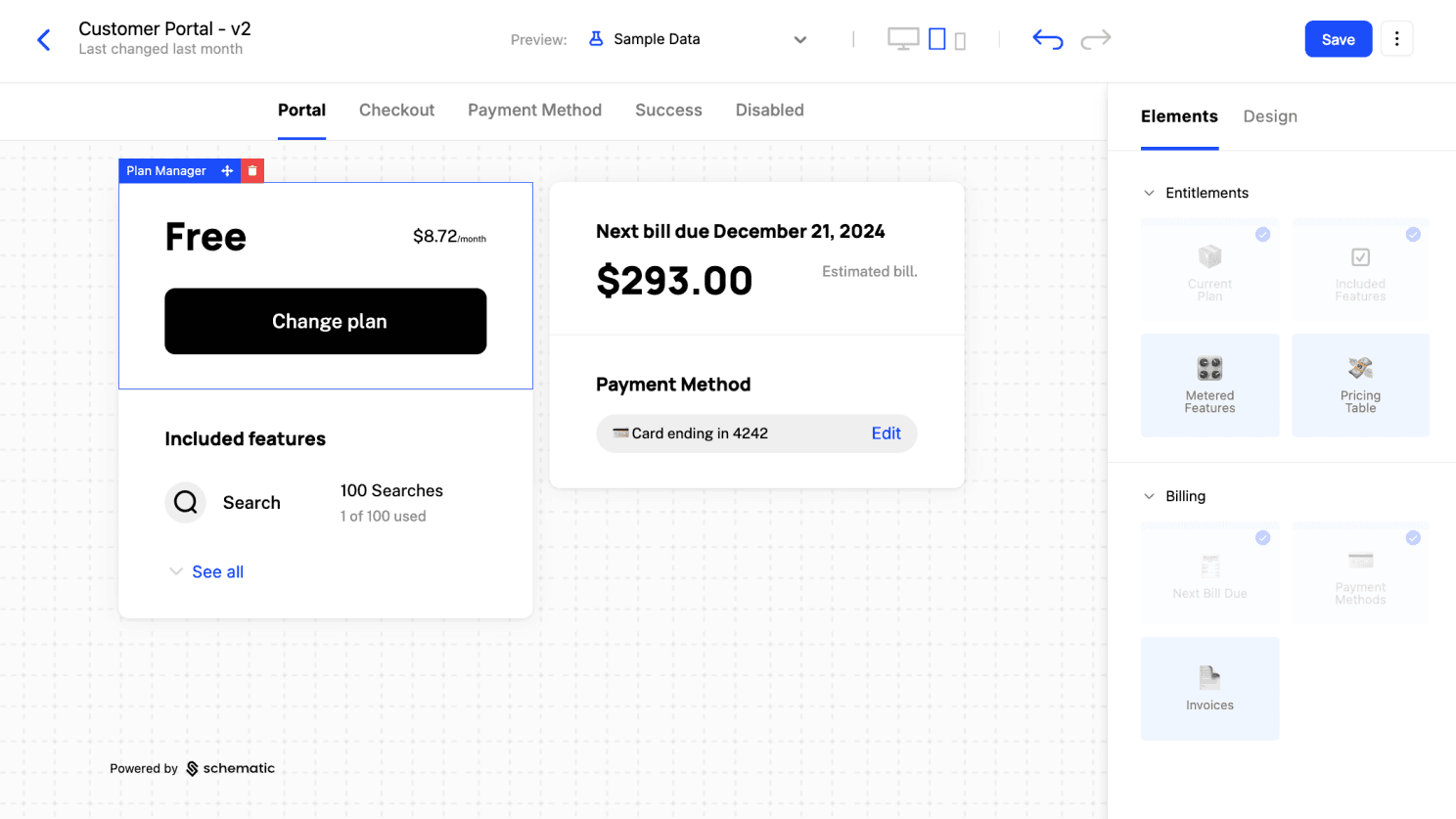
Components are fully customizable both in the elements they are made up of (e.g. Current Plan, Included Features, Invoices, etc.) and in how they look and feel (so it appears native to your product).
Additionally, you may preview as any company in your account using the dropdown at the top of the builder.

Within Schematic, you have access to a Component Builder which allows for full customization both in the elements that are a part of any given Component (e.g. Current Plan, Included Features, Invoices, etc.) and in how the Component looks and feels (so it appears native to your product).
Once you design a Component to your liking, you can drop it directly into your application.
For those building out their monetization stack, and/or thinking about how their monetization needs to evolve, I hope this has been helpful!
What is Schematic and what problem does it solve?: Schematic is a platform that combines feature management and subscription management, helping SaaS teams decouple pricing and packaging logic from application code. It reduces engineering burden and gives product and go-to-market teams greater control over monetization.
How does Schematic integrate with Stripe?: Schematic connects bi-directionally with Stripe to handle billing, while layering on advanced capabilities like feature flags, usage metering, embeddable billing UI components, and internal admin dashboards.
What kinds of monetization models can I implement with Schematic?: You can launch and iterate on hybrid pricing models including usage-based billing, overages, add-ons, trials, and enterprise deals. Schematic supports soft and hard usage limits, credit-based pricing, and custom entitlements.
What are the key building blocks of Schematic’s platform?: Major concepts include the Product Catalog (plans, add-ons, entitlements), Company Profiles (centralized customer data), Metering (tracked usage events), Feature Flags (access control), and Components (embeddable billing UI).
How does Schematic help enforce feature access and limits?: Through structured entitlements and feature flags, Schematic controls access to features based on a customer’s plan, usage, trial status, or custom policies — all without requiring app-level changes.
What kind of UI can I embed in my app with Schematic?: Schematic provides customizable React components for subscription management, usage display, pricing tables, and in-app upgrades. These can be styled to match your brand and dropped directly into your app with minimal setup.